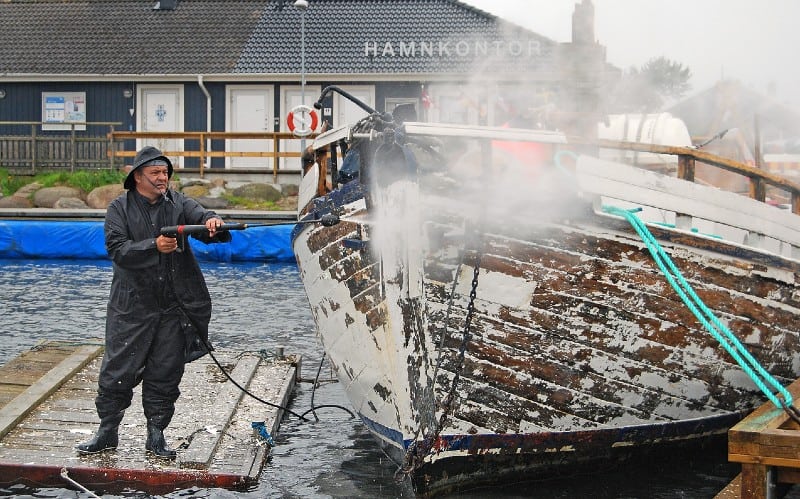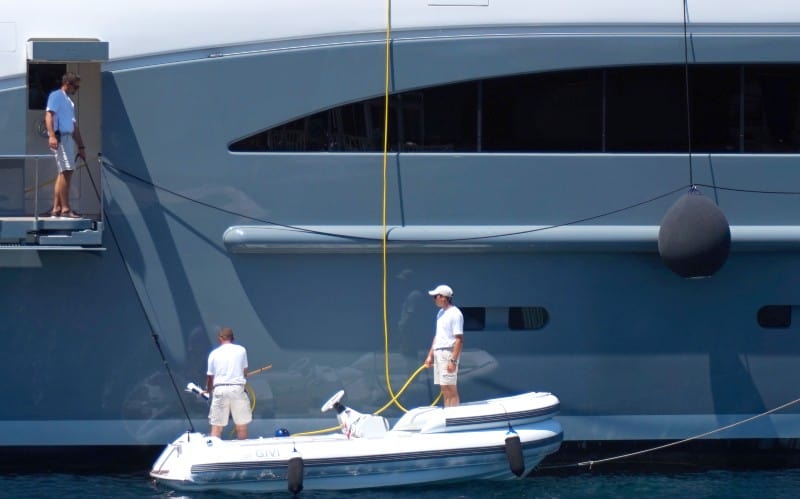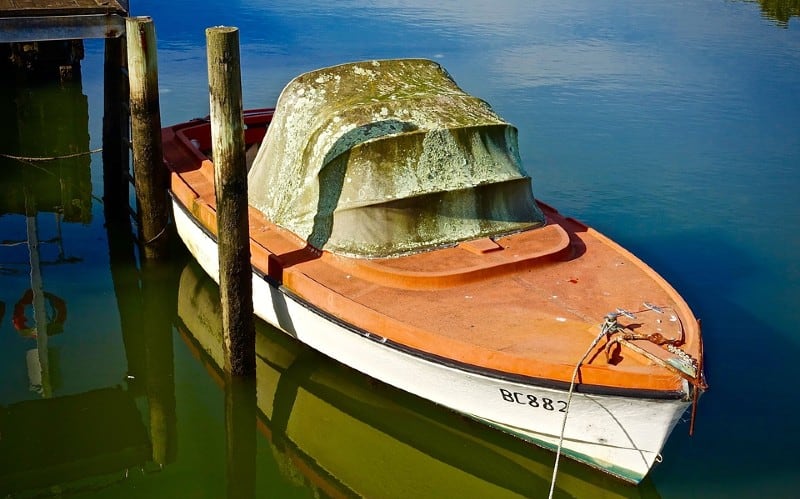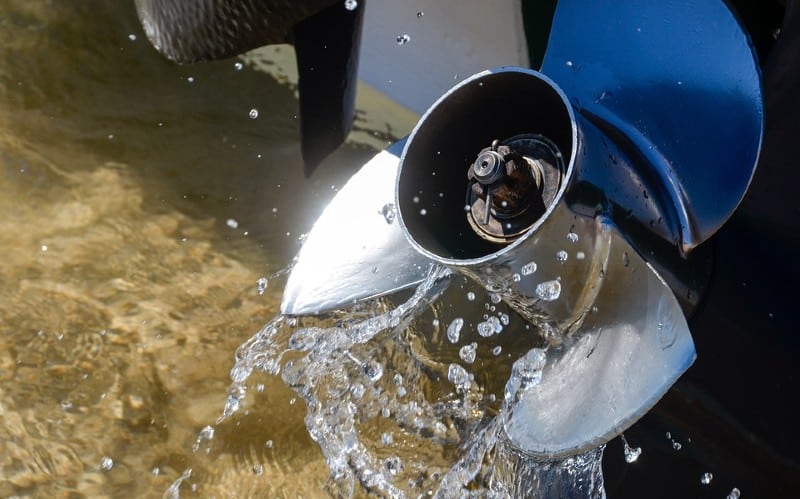Basics of Boat Maintenance: How To Care For Your Boat
Owning boats is much like owning cars. In many ways, the two are able to provide the same kind of enjoyment. But at the same time, they both require maintenance in order to run properly. The longer you let basic boat maintenance go, the more likely you are to have issues. Boat maintenance costs don’t have to be too expensive. But boat maintenance costs can get high if you leave things. In fact, ignoring boat maintenance is almost guaranteed to increase maintenance costs in the long run. Part of boat ownership is making sure you keep up with maintenance.
There are basic boat maintenance tips you can follow any time you head out. These will keep your boat running smoothly and safely. As well, there are boat maintenance tasks you want to accomplish seasonally.
Having a boat maintenance schedule is a good way to ensure you don’t forget what to do. It doesn’t need to be complex or very in depth, either.
Cleaning Boat Maintenance
Many boat owners don’t realize how important cleaning is to fiberglass boat maintenance. A clean boat will literally last years longer than a dirty one. It’s more than just keeping it looking nice. The gel coat on a fiberglass hull needs to be kept clean. If it stays dirty and greasy, it can oxidize. That will make it turn chalky, waxy, and ugly. In time it will weaken.
Clean the hull of your fiberglass boat on a regular basis. If you’re a real stickler as much as every four weeks is good. Try not to go longer than 12 weeks, however. Here are some boat maintenance tips for keeping it clean.
- The first step to cleaning your boat’s hull involves rinsing it down. Don’t use a high pressure hose for this. Just rinse off any algae and dirt.
- Use a boat cleaner designed specifically for cleaning boats. These will be less harsh on both the boats and the environment.
- You should use a soft, large sponge. Wash the hull with gentle, circular strokes. This is best done from the water in a dinghy.
- Scrub from bow to stern. Be careful not to ruin the paint. Rinse with fresh water when you’re done.
- Go over the boat’s hull once more with a clean sponge soaked in water. This will remove any residue.
- If your boat has a lot of hard-set grime, you may need to use some elbow grease and muratic acid. Follow the same initial procedures but use a stronger hose to help remove barnacles.
- Use a mix of muratic acid and water and spray the hull. Let it sit for two minutes until the dirt and algae is cleaned off. If it has not cleaned off, let it sit longer. This mixture can only sit for 10 to 15 minutes. No longer.
- Scrub it down with a soft bristle brush.
- Rinse the boat very thoroughly. Any leftover acid can cause corrosion.
Any dirt that allows mold and mildew to form is also bad. It can ruin upholstery, canvas, and more.
How to Clean Your Boat Upholstery
You’ll want to clean your boat upholstery at least twice a year. Good quality upholstery will already be resistant to mold, mildew and sun damage. Upholstery can be subject to fading, cracking and even bubbling if it is not maintained. Mold and mildew will make it look and smell terrible.
- Start with a soft-bristled brush. You’re going to use this to basically sweep the cracks and crevices of the upholstery. Get out any hair and crumbs.
- Mold and mildew can be easily cleaned with a simple vinegar solution. Three parts white vinegar to two parts water will do the trick. Use a spray bottle and squirt down mold and mildew. Give it several minutes to soak in.
- Use warm water to rinse everything away. A soft sponge can help wipe the surfaces as well.
- If any mold or mildew is stubborn, try using baking soda or tea tree oil. Make sure to spend extra care on the stitching.
- Use a microfiber cloth to dry up excess moisture when you’re done.
- Use a marine protection solution when you’re done. These offer UV protection to prevent your upholstery from wearing out.
Storage Boat Maintenance
Another major part of boar maintenance is the storage of the boat. Most people are not in a position to keep their boat out and in use 12 months per year. That means when boating season comes to an end you need to store it. Learning how to winterize and store your boat will ensure a long life.
During the winter you need to protect your boat from snow, from moisture, and ice. You can’t seal it airtight, either. It needs airflow to prevent mildew growth. Lines need to be clean and clear so chemicals like fuel and oil don’t degrade or destroy anything.
Depending on where you live, you can choose to store a boat several ways. The cost depends on where you live and how you store it. Boat storage fees can range from $50 per foot for the season to $200 per foot.
On the Water: If you live in a warmer climate, this is a potential option. Many harbors and marinas will allow you to keep a boat all year. This is even an option in colder climates at some harbors. De-icer technologies are used for water storage. As are devices that keep the water moving called bubblers will prevent freezing. This is often a good choice for bigger boats.
Outdoor Storage: Outdoor storage is easy and cost-effective. If you have a sailboat, you can even leave the mast up. The best way to do this is to hire a professional to shrink wrap the boat. This will ensure it receives maximum protection. At the same time it will allow the boat to breathe.
If you wish to prepare the boat yourself, you can tarp it. You need to make sure you buy a tarp that is well fitted. It can either go over the boat or, ideally, a wooden frame over the boat.
Indoor Storage: If you have the space, storing your boat in a garage is ideal. There are also storage units you can rent if it’s in your budget. These are temperature and humidity controlled to keep your boat safe. This is a more expensive option than outdoor boat storage.
How to Prepare Your Boat for Storage
You need to make sure your boat is in the best condition it can be in before it goes into storage. To start, give it a cleaning like we’ve outlined above. But after that there are some more steps to follow.
- Inspect all of the hoses. Replace any that are cracked or damaged.
- Replace your inline fuel filters.
- Clean the propeller and the propeller shaft. Lubricate it as well.
- Flush the engine and all the waterlines with fresh water.
- Remove the spark plugs and lubricate the spark plug holes.
- Fill your fuel-tank and add a stabilizing, antibacterial agent.
- Disconnect the battery. Store it in a cool, dry place to preserve the charge.
- Open faucets and valves
- Remove any carpeting and electronics
- Top up your antifreeze
Boat Motor Maintenance
Just like your car, your boat engine needs maintenance. A well maintained boat engine will last years longer than one that is ignored. You don’t need a ton of technical know-how to keep it working. Maintenance for an outboard motor may be difference than a sterndrive, so keep that in mind.
Any time you are going to head out in your boat, check a few things to keep your engine working properly.
- Give your propeller a once over. Make sure it is clear of debris. A jammed up propeller can cause engine damage.
- Check your water intake. It needs to be clean and free of debris.
- Check your fuel levels. You don’t want to let the fuel level get too low. Also make sure the vent is open.
- Make sure you’re checking for water in the fuel. This will cause damage to your engine if it’s not removed.
- Keep an eye on your spark plugs. Check the spark plugs for any corrosion or signs of being rusted out or scorched. Replace the spark plugs as needed.
- Check your fuel lines for any signs of wear. Look for cracks or other damage and replace as needed.
- Check your oil levels regularly, just like in a car.
- Your propeller and engine runs on belts. Keep an eye on them and if you see cracks, replace them.
- Keep an eye on your engine clamps. If they are getting rusty, replace them.
- Flush the motor after every trip. This clears out sand and other debris.
Salt Water Boat Maintenance
There is a difference between freshwater boat maintenance and salt water boat maintenance. Saltwater is harder on boats. It can cause corrosion and damage much faster than freshwater. For that reason, you need to wash your boat within 24 hours of being in freshwater. Salt residue can corrode boats quickly. You should flush the engine just as quickly.
Boat Maintenance Checklist
Having a boat maintenance checklist is a good idea. It allows you to get things done quickly and efficiently. It can be hard to remember every single step every time. A checklist ensures you don’t miss anything.
Inspect your Engine
- Check the fuel hoses.
- Check the engine oil levels.
- Change oil if necessary. Your owner’s manual will tell you how often this needs to be done. Most recommend every 20 hours of operation for the first 100 hours. Then every 100 hours of operation thereafter. Once a year is also fairly common.
- To change the engine oil, let your engine run for 5 to 10 minutes.
- Turn the engine off and place a container under the drain plug.
- Remove the drain plug and loose the screw above it. This will start the oil draining.
- Allow the oil to drain out for about 30 minutes.
- Once drained, replace the filter.
- Replace the drain plug and then tighten the screw again to secure it in place.
- Refill the oil tank with the correct kind of oil. Make sure it’s the right kind for your engine.
- Change the oil filter
- Check the fuel levels
- Check coolant levels
- Check power steering fluid levels
- Check belts
- Check spark plugs
- Check clamps
- Look for rust
Inspect the Battery
- Use a multimeter to check your battery’s charge. A marine battery is only meant to last 5 to 7 years under ideal circumstances. Your multimeter should read 13.2 to 13.4 volts.
- Check the connectors for corrosion.
- Clean connectors with a wire brush
Inspect the Propeller
- Look for breaks or damage like small dents
- Look for fishing line, weeds or other debris that can tie it up
- Make sure the nut is secure
- Remove the propeller nut and grease the shaft a couple of times per year.
Inspect the Bilge
- Check the bilge pumps for corrosion or damage
- Check the bilge pump hoses for debris or build up.
- Clean the bilge if necessary
Inspect the Hull
- Look around the hull for barnacles and other buildup.
- Inspect for dents, cracks and scratches.
- Check the drain plugs to make sure they are secure and in good condition.
Inspect the Electrical Lines
- Inspect wires and electrical lines
- Keep the lines clean and straight
- Use your multimeter to check electrical components
Inspect the Trailer
- Check the coupler and lubricate it to ensure proper operation.
- Check the winch and the winch strap to make sure they’re working well.
- Inspect the safety chains. Look for damage and rust.
- Make sure the tie downs and tie down eyes are secure.
- Make sure the tires are properly inflated
- Inspect tires for any wear or damage. Tighten bolts and replace any that may be missing.
- Check the electrical systems. Inspect the lights, wires, and connectors.
- Check wheel suspension and wheel bearings
- Check the boat support bunks and rollers.
Make a Boat Maintenance Schedule
Not every item of boat maintenance needs to be done every time. The checklist shows you everything. The schedule shows you when to do it.
Every Time You take Your Boat Out
These are the must do items for your boat. Skipping any of these could cost you in the long run.
- Check for hull damage
- Wash the hull and the deck of the boat
- Check the propeller for damage
- Check the bilge pump
- Check your transom mounting bolts
- Check cowl air intake. Look for and clear out blockages
- Check the battery
- Check the electrical components
- Check the steering movement
- Check the oil
- Check the fire extinguishers
- Check your safety gear to make sure it’s present and in working order
- Make sure you have your registration and other important paperwork. Also make sure it’s all up to date.
After 20 Hours of Operation
- Treat your fuel with a decarbonizer agent
- Make sure your engine is putting up the correct RPM
- Give your interior a cleaning
- Add oil if necessary
- Check the lower unit to see if there’s any water
After 50 Hours of Operation
- Inspect the fuel lines for any signs of cracking and wear. Replace them if they are looking damaged.
- Replace your fuel/water separating filter
- Clean the bilge pump and make sure the hoses are clear of debris.
- Inspect the steering system and make sure the fluid is topped up and clean. Look for any damage or leaks.
- Do a full cleaning of the deck and hull including waxing the hull.
After 100 Hours of Operation
- Have the boat inspected by a mechanic. Make sure all systems are running properly and replace anything damage or badly worn. Make sure you get your linkage checked.
- Give the rub rail an inspection. Replace or repair damage.
- Replace the power trim and tilt fluid if needed.
- Check and change gearcase and powerhead oil.
- Check the engine mounts. Replace any that are coming loose or are corroded.
- Check your bow and stern eyes and make sure the mountings are secure.
- Inspect all the bolts and fasteners. Tighten them as necessary.
- Replace your water pump impeller.
- Lubricate the boat’s grease points
- Spray down electrical with silicone spray
- Give your paint a touch up
- Check your spark plugs. Clean the plugs or plug holes with a wire brush. Replace them if necessary.
- Check the cleats. Make sure they are secure and not corroded.
Before Storage: There are some clearly defined times here that you can follow. Before putting your boat in storage, everything on the list should have been done at least once. If you’re storing the boat for winter, then you will need to winterize your boat. That can seem like a very daunting process if you’ve never done it before.
How to Winterize a Boat
The most important thing to focus on when winterizing a boat are the systems that can hold water. If water is left to freeze in any lines, hoses or components, it could cause damage.
- Drain the engine of any water and clean it out. Flush with fresh water.
- Drain the gear case if necessary
- If you have a sterndrive engine you may need to clean off barnacles or plants
- Apply some corrosion protection to the engine.
- Change the oil and cycle some antifreeze through the manifold
- Change the transmission fluid
- Remove the spark plugs and spray fogging oil into the cylinders
- Add a fuel stabilizer to the fuel tank
- Change fuel filters and fuel/water separator
- Drain water from the plumbing system including from the head and sinks
- Once drained, add antifreeze.
- Drain water from all other systems. That includes things like a livewell, a bilge, and so on.
- Clean the bilge with soap and water. Dry it when you’re done. Spray it down with a moisture-displacing lubricant. Something like WD-40 is good. Adding some antifreeze may help prevent freezing for any water you were unable to drain.
- Take out the drain plugs from the hull.
- Remove anything of value that can be removed. Electronics, accessories, and so on. Take safety equipment like life jackets and fire extinguishers as well.
- Give the exterior a proper cleaning.
- Cover your boat with the proper fitting tarp or boat cover. Make sure there is airflow to prevent the formation of mildew when it’s in storage.
Categories: Boats


















1 Comment
Robert Hogward on August 15, 2021
Hi there, Very informative post, thank you for taking the time to write this all out! Was bookmark your blog and will often come back.